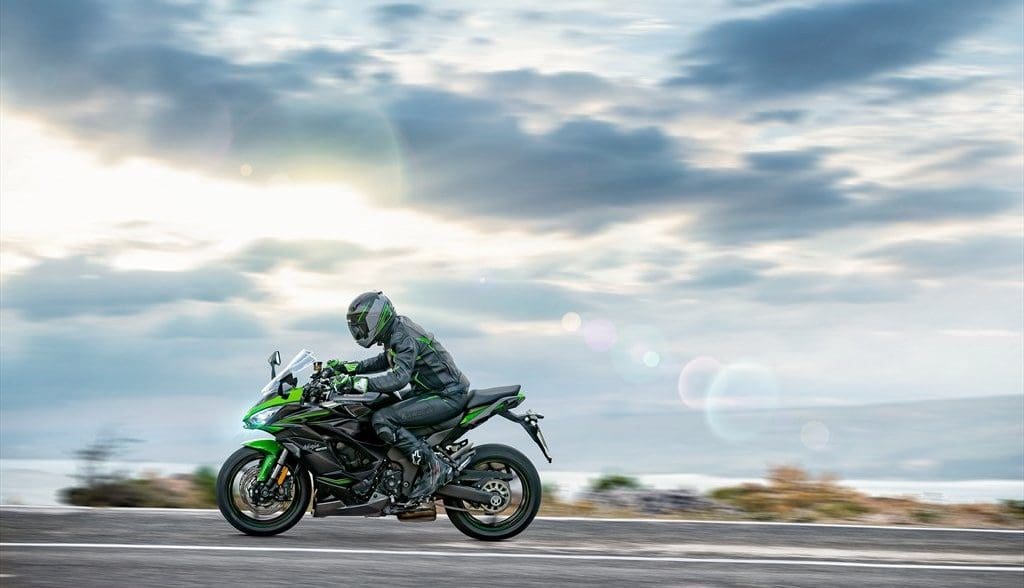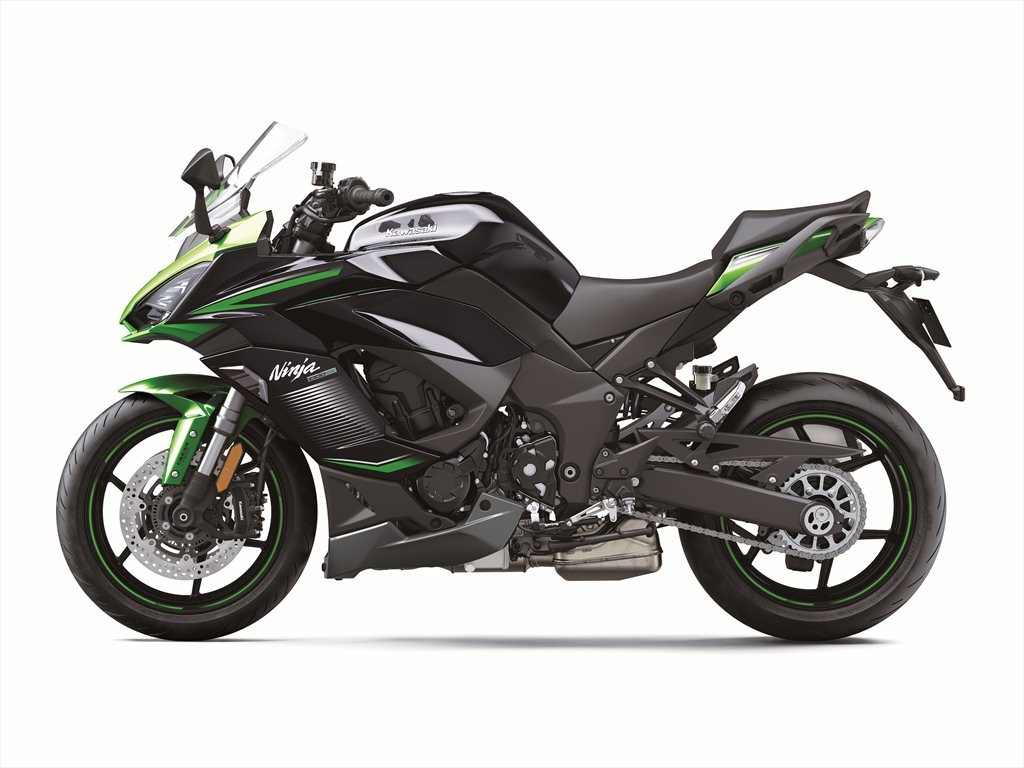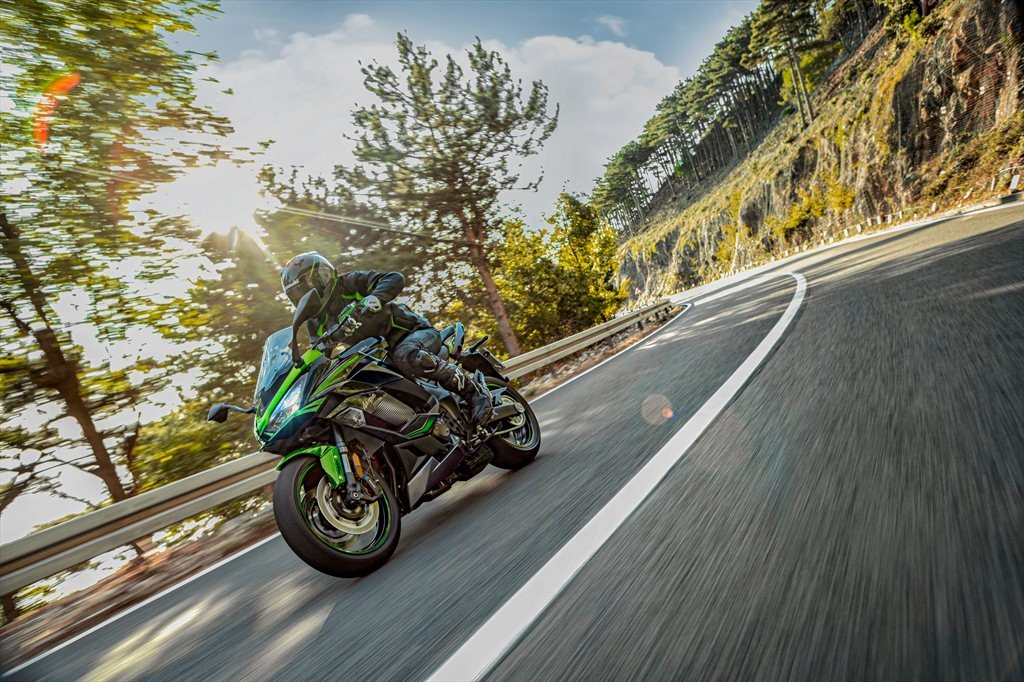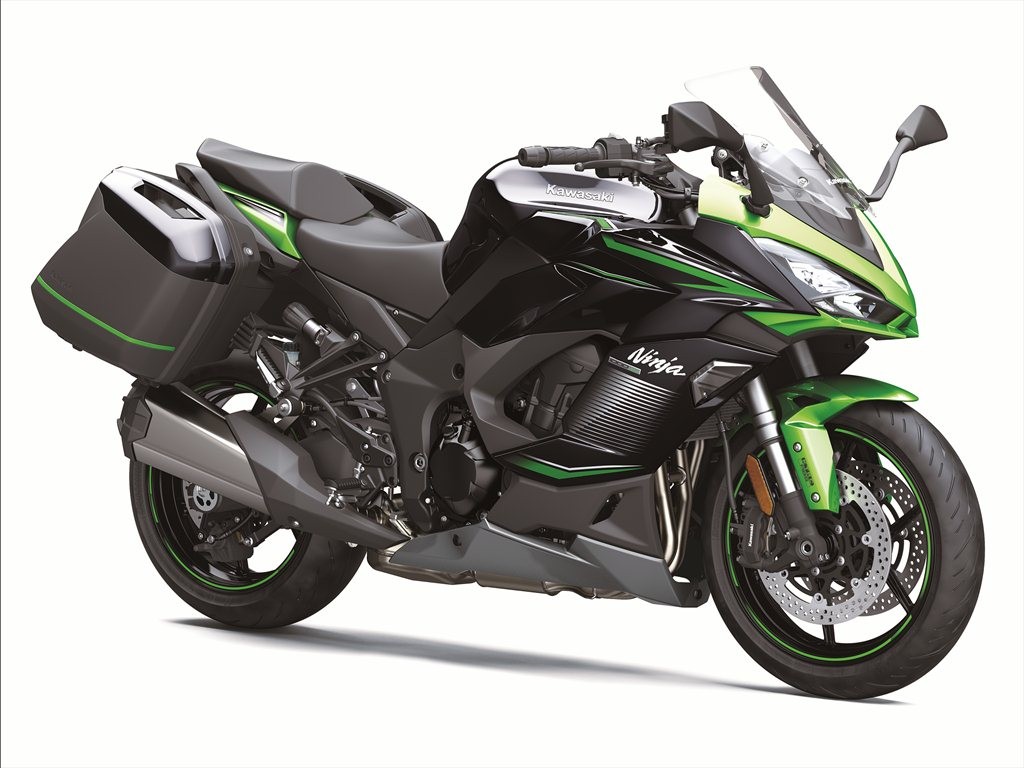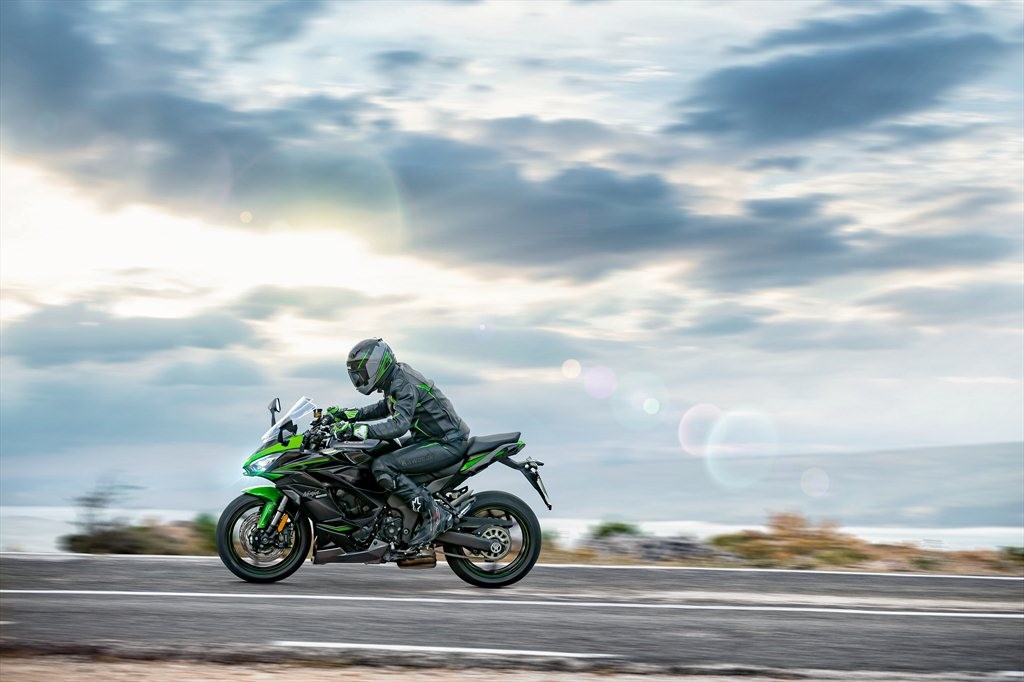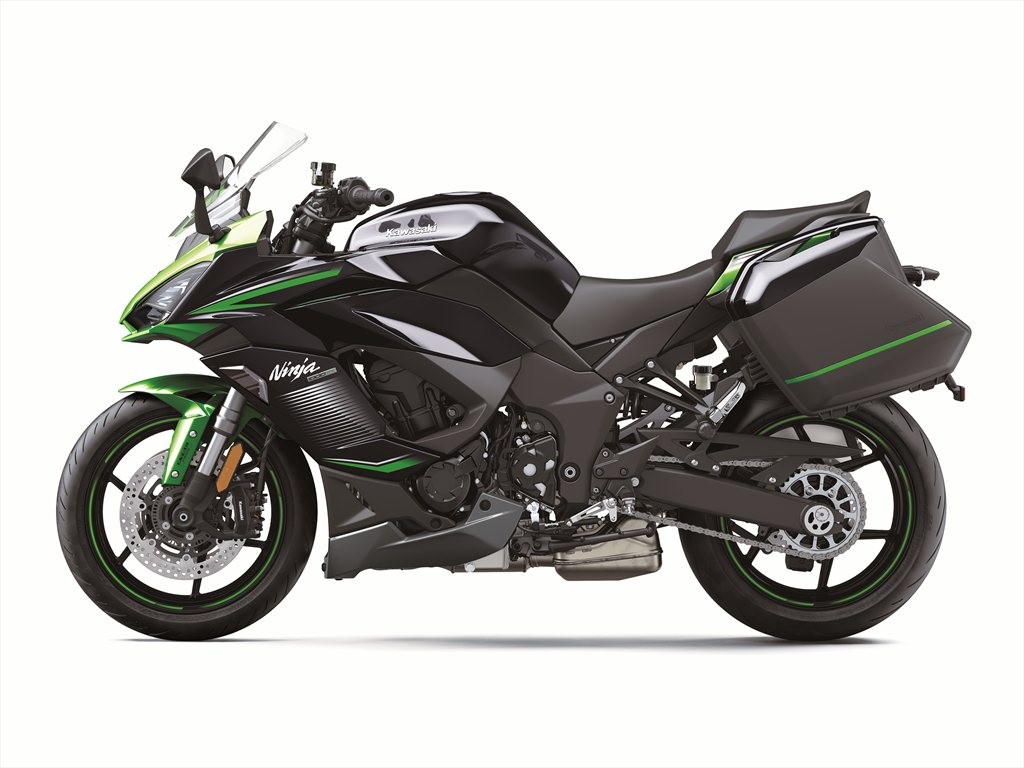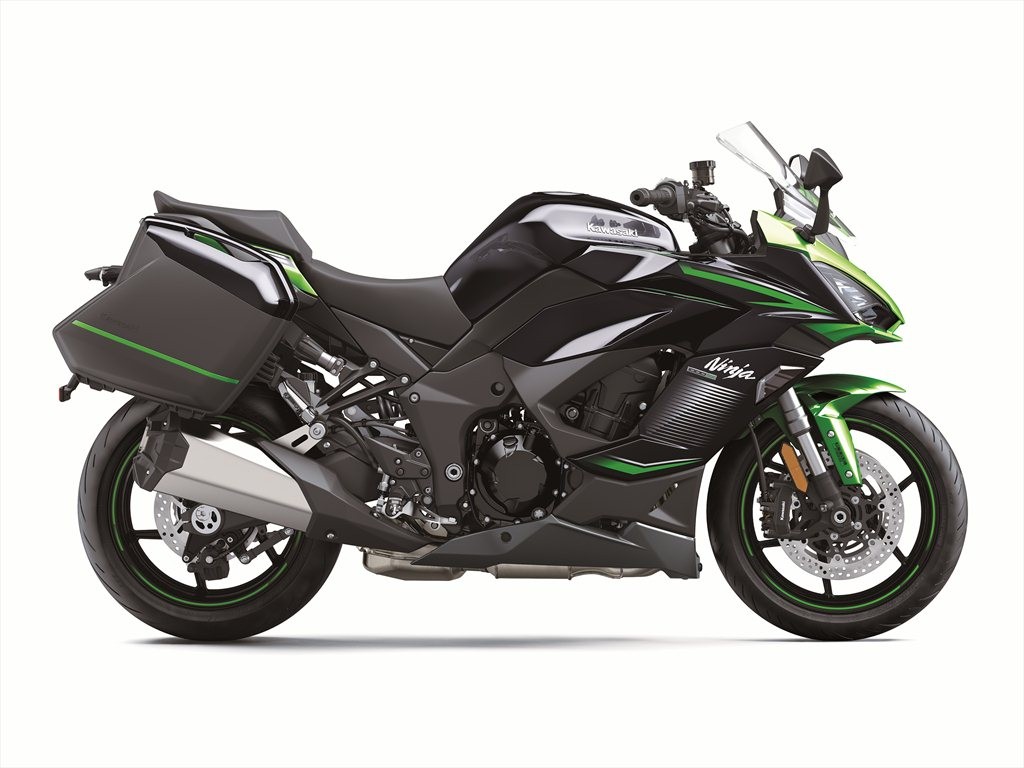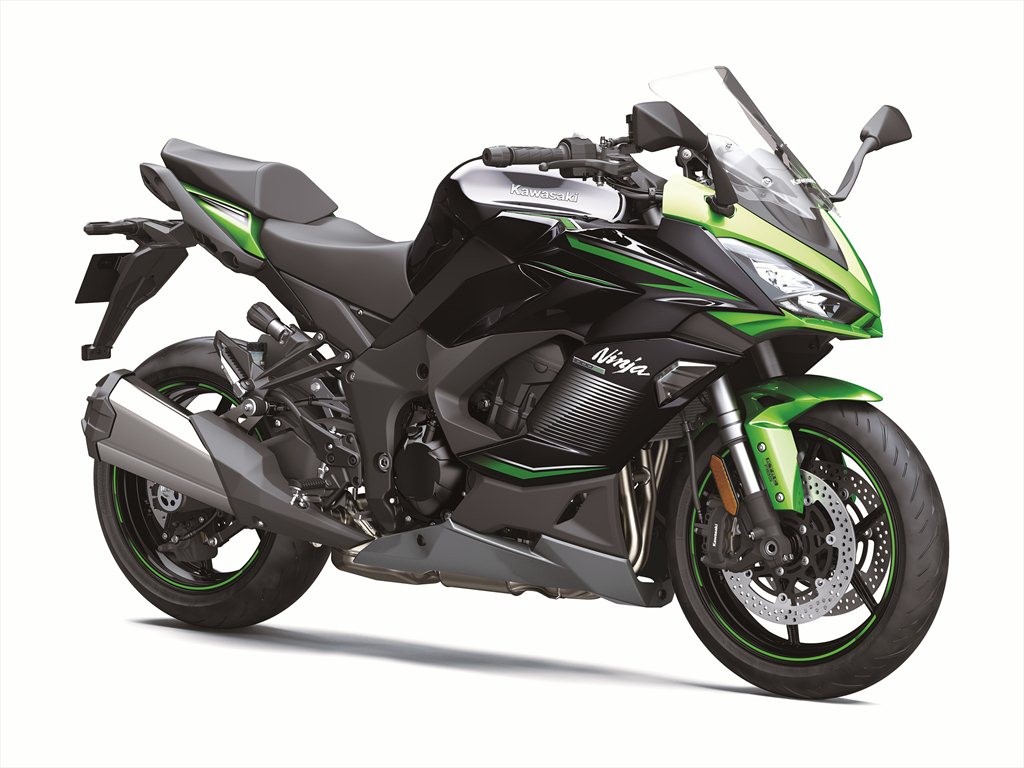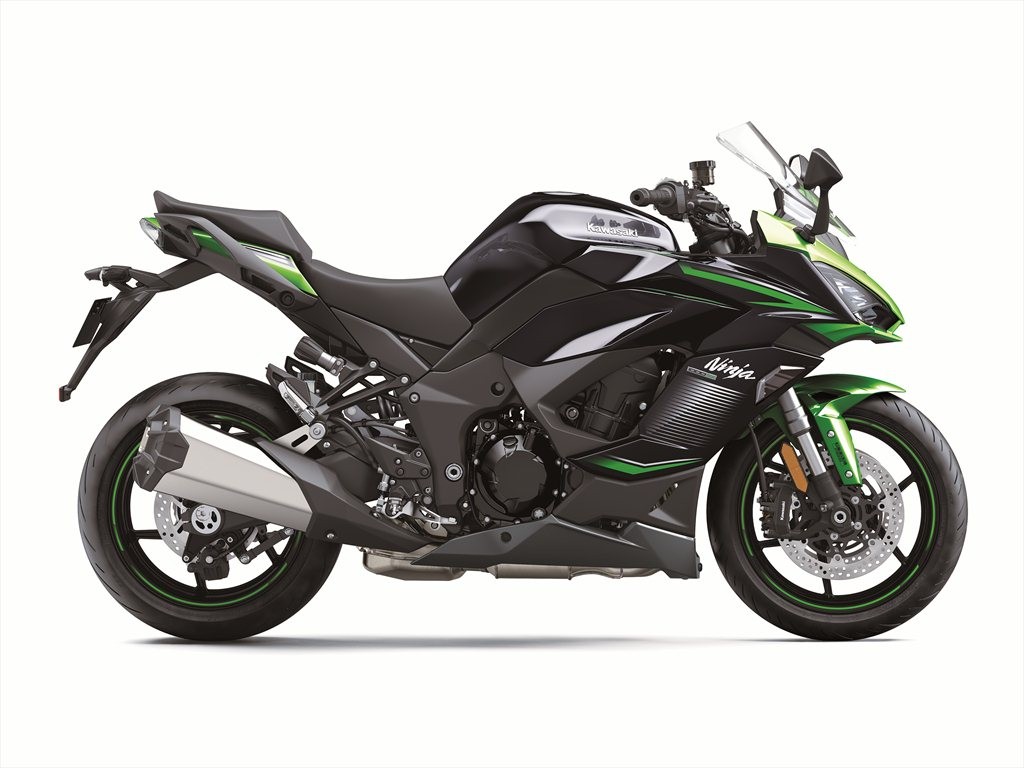The 2023 Kawasaki Ninja 1000SX Is A Capable And Powerful Sport Touring Motorcycle
Contents
Kawasaki’s 2023 Ninja 1000 SX stands out as a compelling choice in the sport touring segment, blending performance, comfort, and advanced technology. This bike has a powerful 1,043cc inline-four engine, which delivers a thrilling 140 horsepower along with a well-rounded riding experience. The engine is paired with a 6-speed transmission featuring a quick shifter, allowing for clutchless upshifts and seamless acceleration. Aiding rider control, the motorcycle also comes equipped with an Assist and Slipper Clutch and electronic cruise control.
Showcasing an aggressive design, the Ninja 1000 takes its styling cues from its more potent siblings in the Kawasaki lineup. The motorcycle features a distinctive LED headlight and taillight, contributing to its modern and sleek appearance. The bike is not short on the tech side and is well equipped with a full-color TFT display, providing riders with essential information and smartphone connectivity through Kawasaki’s smart phone integration.
Reigning in the power and keeping things in line In the suspension department, the Ninja 1000 features a fully adjustable 41mm inverted fork in the front and a horizontal back-link shock with adjustable rebound damping and preload in the rear. Braking capabilities are provided by high-quality components, including dual 300mm front discs with radial-mount monobloc calipers and a single 250mm rear disc, all supported by advanced technology. All this just means that you get an excellent performing motorcycle that is at the top of the sport touring realm and compares well with other Japanese brands in this segment.
The 2023 Kawasaki Ninja 1000 SX starts at: $13,199 USD/$15,699 CAD
On this page: we’ve curated specs, features, news, photos/videos, etc. so you can read up on the new 2023 Kawasaki Ninja 1000 SX in one place.
Model Overview
General Info
- Price: $13,199 USD/$15,699 CAD
- Key Features:
-
- Assist & Slipper Clutch
- Riding Modes
- Cruise Control
- TFT display
Main Specs
- Engine: 1,043 cc 4-stroke, In-Line Four, DOHC, 16-valve, liquid-cooled
- Power: 140 horsepower
- Torque: 82 lb-ft
- Weight: 513 lbs (232 kgs)
- Seat Height: 32.3 inches (820 mm)
Competitors
2023 Kawasaki Ninja 1000SX Specifications
ENGINE |
||
| Engine | 1,043cc, liquid-cooled, 4-stroke, DOHC 16-valve in-line four | |
| Power | 140 hp | |
| Bore x Stroke | 77.0 x 56.0mm | |
| Compression Ratio |
11.8:1
|
|
| Fuel System | Fuel injection: ø38 mm x 4 | |
| Starter | Electric | |
| Lubrication | Forced lubrication, wet sump | |
DRIVETRAIN |
||
| Clutch | Wet multi-disc, manual | |
| Transmission | 6-speed, Return | |
| Final Drive | Chain | |
CHASSIS |
||
| Suspension Front | ø41 mm inverted fork with compression and rebound damping and spring preload adjustability / 120 mm (4.7 in) | |
| Suspension Rear | Horizontal Back-link, gas-charged shock with rebound damping and remote spring preload adjustability / 144 mm (5.7 in) | |
| Brakes Front | Dual semi-floating ø300 mm discs with radial-mount, monobloc, opposed 4-piston calipers | |
| Brakes Rear |
ø250 mm disc with single-piston caliper
|
|
| Tires Front | 120/70ZR17M/C (58W) | |
| Tires Rear | 190/50ZR17M/C (73W) | |
| Fuel Tank Capacity | 19 litres | |
| Color |
Emerald Blazed Green / Metallic Diablo Black / Metallic Graphite Gray /Metallic Matte Sovereign Red / Metallic Diablo Black /Metallic Matte Carbon Gray
|
|
ELECTRICAL |
||
| Ignition | Digital | |
| Spark Plugs | ||
| Headlight | LED | |
| Tail Light | LED | |
DIMENSIONS |
||
| Overall Length | 82.7 in | |
| Overall Width | 32.5 in | |
| Overall Height | 46.9 / 48.2 in | |
| Wheelbase | 1,440 mm (56.7 in) | |
| Ground Clearance | 5.3 in | |
| Seat Height | 32.3 in | |
| Curb Weight | 514 lb | |
WARRANTY |
||
| Warranty | 12 Months | |
| Kawasaki Protection Plus | 12 / 24 / 36 / 48 months | |
2023 Kawasaki Ninja 1000SX Features
Assist & Slipper Clutch
Under normal operation, the assist cam functions as a self-servo mechanism, pulling the clutch hub and operating plate together to compress the clutch plates. This allows the total clutch spring load to be reduced, resulting in a lighter clutch lever feel when operating the clutch.
When excessive engine braking occurs – as a result of quick downshifts (or an accidental downshift) – the slipper cam comes into play, forcing the clutch hub and operating plate apart. This relieves pressure on the clutch plates to reduce back-torque and helps prevent the rear tire from hopping and skidding. This race-style function is particularly useful when sport or track riding.
Economical Riding Indicator
While effective vehicle speed and engine speed may vary by model, paying attention to conditions that cause the “ECO” mark to appear can help riders improve their fuel efficiency – a handy way to increase cruising range. Further, keeping fuel consumption low also helps minimize negative impact on the environment.
Electronic Cruise Control
Electronic Throttle Valves
Electronic throttle valves also enable more precise control of electronic engine management systems like S-KTRC and KTRC, and allow the implementation of electronic systems like KLCM, Kawasaki Engine Brake Control, and Electronic Cruise Control.
KCMF (Kawasaki Cornering Management Function)
KQS (Kawasaki Quick Shifter)
KTRC (Kawasaki Traction Control)
Less intrusive modes maintain optimum traction during cornering. Designed with sport riding in mind, they facilitate acceleration out of corners by maximizing forward drive from the rear wheel. And because Kawasaki’s sophisticated software bases its dynamic analysis on the chassis’ orientation relative to the track surface (rather than relative to a horizontal plane), it is able to take into account corner camber, gradient, etc., and adapt accordingly.
In the more intrusive modes (and for some models, in any mode), when excessive wheel spin is detected, engine output is reduced to allow grip to be regained, effectively enabling riders to negotiate both short, slippery patches (train tracks or manhole covers) and extended stretches of bad roads (wet pavement, cobblestone, gravel) with confidence.
Power Modes
Smartphone Connectivity
2023 Kawasaki Ninja 1000SX Photos
2023 Kawasaki Ninja 1000SX Videos
2023 Kawasaki Ninja 1000SX review by Motorevs27:
2023 Kawasaki Ninja 1000SX Review by Old Guy Ridin’:
Links
Kawasaki Official Websites


